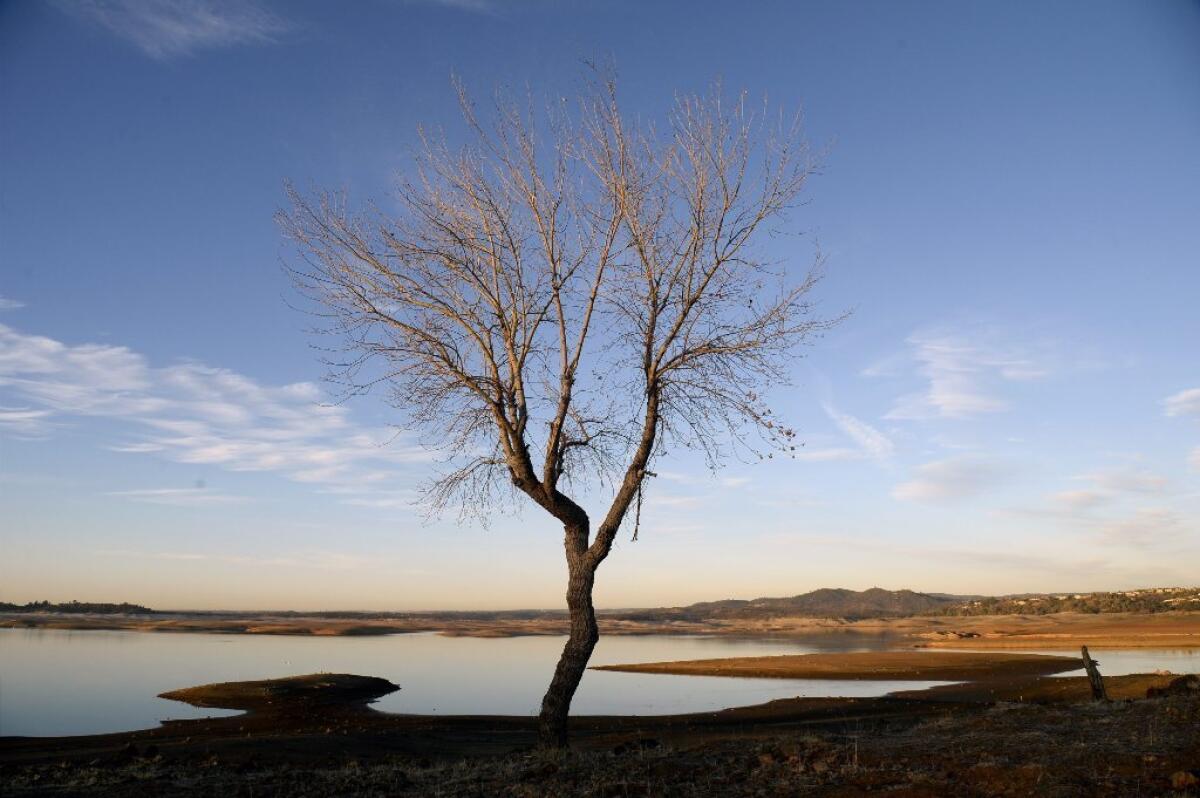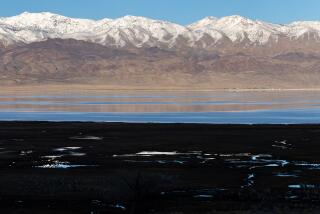California’s drought, times three

Southern Californians are facing not one drought but three, interconnected yet distinct, each bringing its own hazards and each requiring its own emergency and long-term responses.
The first drought is regional, caused by the lack of rain in our own mountains and our own backyards. In normal winters — or rather those we have come to accept as normal — storms blow south from the Gulf of Alaska, churning in a counterclockwise direction and keeping much of their stored water in the air until they move inland from the west and run smack into the San Gabriel Mountains. When they lack enough energy to push over the peaks, they dump their water — in torrents that rush down the mountainsides, feed seasonal rivers such as the Los Angeles, replenish groundwater basins and, occasionally, cause havoc.
The winter rain falls not just on the slopes but throughout the basin and the valleys that make up the geographic triangle outlined by the mountains and the coastline. That’s the water that soaks into our backyards and landscapes and lessens the need for sprinklers. It’s the water that also soaks into natural oaklands and scrublands, and when it goes missing — as it has for three winters now — the ground dries out, the trees and chaparral get dangerously crisp and wildfire becomes an increasing danger.
That’s the hazard Southern California faces in the coming months. The recent Colby fire north of Glendora may have been started, as prosecutors allege, by three men carelessly smoking marijuana in the foothills, but it spread quickly and frighteningly because of the tinder-dry conditions. Without substantial rainfall in February and March, we can expect more fires like that one in the summer and fall fire seasons.
Other than extra caution by residents and vigilance and expertise on the part of professional firefighters, there is little Southern Californians can do about this regional drought beyond hoping for rain.
The second drought is different but related. The same Gulf of Alaska system that usually sends rain south of the Tehachapis also sends storms across the Central Valley and into the higher, colder Sierra Nevada, where the water falls as snow and forms California’s greatest natural reservoir, releasing its water later in the year in manageable, and useful, seasonal pulses. More often than not, that’s the water that comes out of the tap here, brought to Los Angeles households from Eastern Sierra snowmelt through the Owens River and the aqueduct for which the centenary was celebrated a few months ago; and it’s the water that comes to us, and to all of Southern California, plus Silicon Valley, much of the coast and Central Valley fields and homes, from Western Sierra snowmelt that flows from the Sacramento River to the Sacramento-San Joaquin River Delta and to the California Aqueduct.
The Northern California drought does little to affect fire danger here but a great deal to affect the supply of water to homes and businesses. Southern California is unlikely to go thirsty this year because it has water reserves banked around the region. But it’s worth noting that although the winter snowpack is down by 80%, Gov. Jerry Brown’s drought declaration called for only a 20% decrease in water use.
It may seem counterintuitive to let lawns turn brown and gardens dry up in such dangerous conditions. But conservation is nevertheless crucial to address the problems caused by the drought in the Sierra.
The third drought is occurring across the Western United States, and especially in the Rocky Mountains, which feed the Colorado River and by extension the other major component, after the Central Valley, of California’s agricultural wealth. It also forms a major part of Los Angeles’ water portfolio.
Because these three droughts are interconnected, we rarely suffer from one without dealing with the others, and this year’s situation is no different. The vast majority of Californians rely on water that falls in other parts of the state, or even outside the state, and although the multiple sources make water more secure for all of us, shortages usually come all at once.
Southern California must prepare for the future by recapturing more of the rainwater that in wetter years still runs, unused, to the sea. It must do even more than is already being done to clean and reuse urban water. We will likely need a storm water bond, tax or other measure. We may have to build new dams to store water for future use without drying up rivers and destroying the ecosystem, as dams in California historically have done. A statewide water bond, which voters will consider in November, should help clean up groundwater basins here to allow residents to rely more on local supplies and less on the Sierra — although distant snowmelt must always be a part of the entire state’s water portfolio.
That means diverting some of the delta’s water with pumps that do less damage to endangered fish and rely less on earthquake-vulnerable levees. The kind of system envisioned by the Bay Delta Conservation Plan would help all parts of California deal with global climate change and its inevitable result: precipitation that falls on the Sierra less like the snow that generations have come to rely on and more like the rain that comes, when it does, to Southern California in unmanageable torrents.
These measures are needed not merely for drought years like this one. But the trio of droughts serves as a reminder of the urgent need for action — to plan, to conserve, to store, to reuse, to transport and to share the state’s most precious resource.
More to Read
A cure for the common opinion
Get thought-provoking perspectives with our weekly newsletter.
You may occasionally receive promotional content from the Los Angeles Times.










